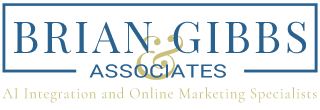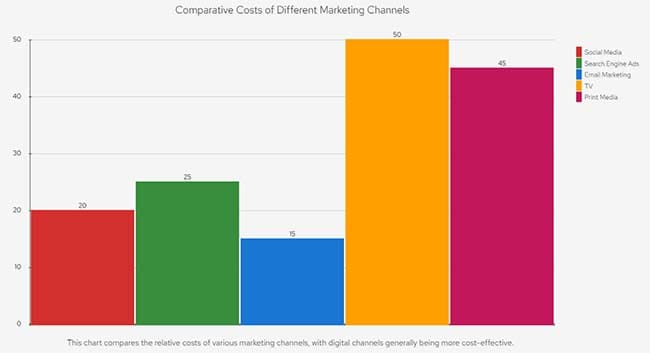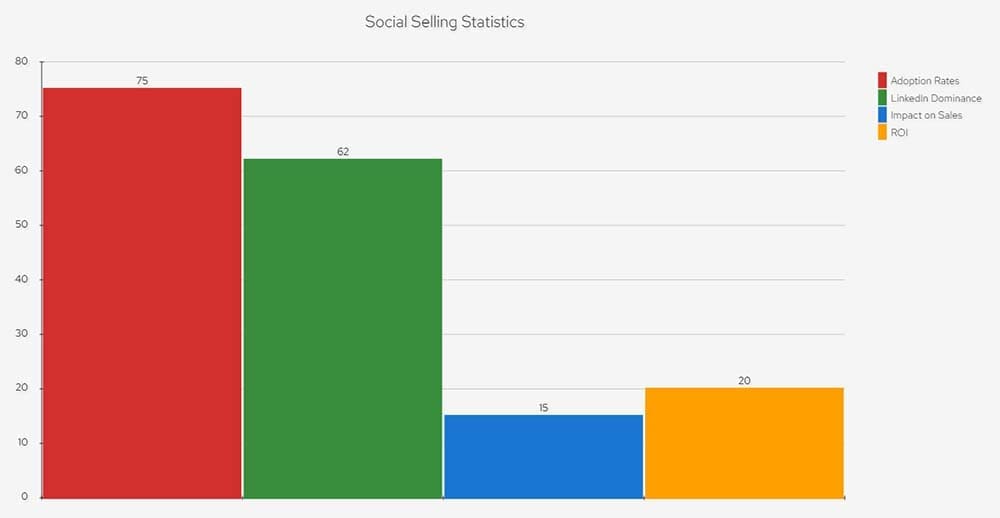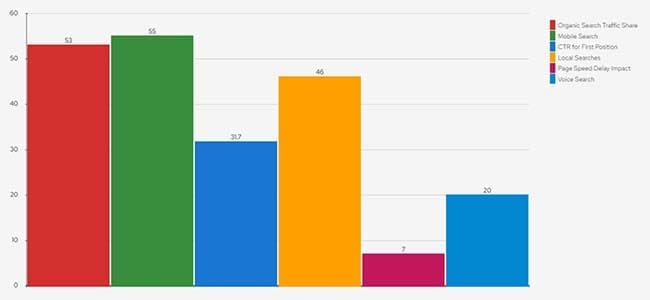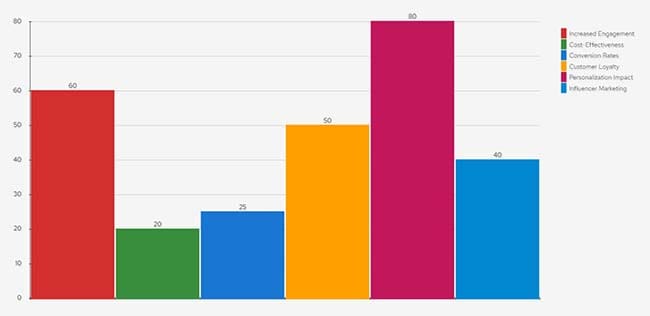Why is Digital Marketing Cheaper and More Cost-Effective?
TL;DR
Digital marketing is a cost-effective and precise tool for businesses to promote their products and services. It offers advantages over traditional methods by allowing targeted advertising, efficient budgeting, and measurable results. With tools like SEO, PPC, and data analytics, businesses can achieve a higher return on investment, reach their target audience faster, and optimize their strategies in real time. Embracing digital marketing is essential for modern businesses to thrive in today’s digital era.
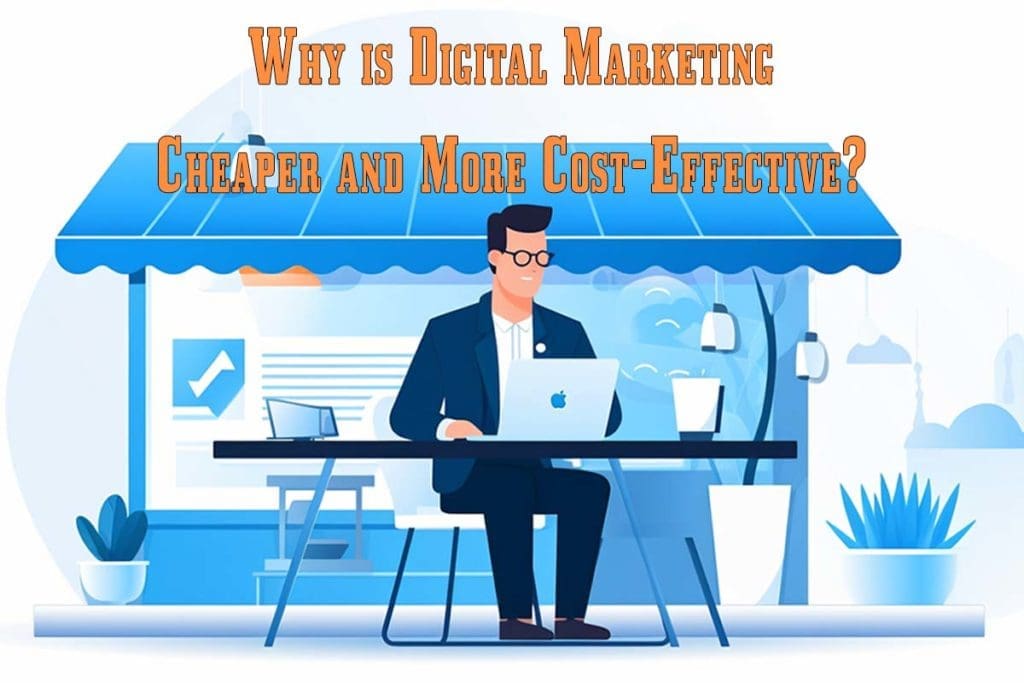
A man sitting at a desk wondering why digital marketing is cheaper.
In today’s fast-paced digital era, businesses are constantly seeking innovative ways to stand out and achieve their goals efficiently. With myriad marketing options available, the challenge lies in identifying the most effective and cost-efficient strategies. Enter the realm of digital marketing—a powerful tool that promises reach, precision, and affordability. This guide delves deep into the world of digital marketing, highlighting its advantages over traditional methods and offering insights into its various facets. Whether you’re a seasoned marketer or a business owner looking to explore new avenues, this comprehensive overview will provide you with a clear understanding of why digital marketing is not just a trend but a game-changer in the world of business promotion.
Cost-Effective Digital Marketing
Digital marketing offers a cost-effective way to promote products and services online. It’s more affordable than traditional marketing. Here’s why:
- Targeted Advertising: Companies can use data and analytics to focus on specific audiences and interests, optimizing their ad spend.
- Cost-efficient Channels: Social media, search engine ads, and email marketing are more affordable than TV or print media.
- Flexible Budgeting: Companies can easily adjust spending and make real-time changes to optimize their investment.
- Measurable Results: Track and measure digital marketing campaigns’ performance with analytics tools.
Digital marketing also provides personalization options: tailor messages based on user behavior and preferences. Plus, you can retarget customers digitally! Monitor your campaigns’ performance to get the most out of your resources.
Efficient Retargeting
Efficient Retargeting is a popular tool among businesses. It helps them target potential customers who have shown interest in their product or service. Ads are displayed to users across various platforms, increasing brand visibility and exposure. It also reminds customers about products they have viewed or abandoned in their carts, improving conversion rates.
Furthermore, this technique reduces wasteful spending by focusing on customers who are more likely to convert. Plus, it enables personalized messaging, tailoring ads to individual users’ preferences and behaviors. It also provides valuable data on customer engagement, allowing marketers to refine their targeting strategies.
Additionally, Efficient Retargeting maximizes cost savings by directing advertising budgets toward high-potential leads. This results in a better return on investment for digital advertising efforts.
In the beginning, Efficient Retargeting was created in response to traditional advertising methods’ challenges in reaching potential customers. As technology advanced, digital advertising allowed businesses to engage with their target audience more precisely, leading to the development of efficient retargeting techniques. Now, it stands as an integral part of successful digital marketing strategies.
No need for a charm bracelet; you can just use social selling to convert customers – it’s like online dating, but with more sales!
Social Selling & Conversion
Social media marketing and converting leads into sales are crucial in digital marketing plans. Leveraging popular networks like Facebook can let companies talk with prospective customers and better their conversion rates.
Metrics to measure social selling success:
- Number of followers on social media sites
- Engagement rate on posts/content
- Click-through rate on CTA buttons
- Conversion rate from leads to sales
To up their social selling and raise conversion rates, businesses can:
- Put out attractive and shareable content. Quality content that engages the target audience encourages more possible buyers.
- Invest in targeted ads on platforms like Facebook. Doing so allows companies to hit a larger crowd and improve brand recognition, which then leads to higher conversion rates.
- Utilize effective CTA buttons. Clear and appealing CTA buttons motivate users to take the desired action – like buying something or subscribing to a newsletter.
- Make use of user-generated content. Let customers share their experiences with the brand through reviews and testimonials. This builds trust with potential customers and affects their buying decisions.
By applying these tips, businesses can sharpen their social selling strategies and better their conversion rates on social media. To maximize digital marketing ROI, investing in digital marketing is cheaper than hiring a fortune teller, but still a risk.
Maximizing Digital Marketing ROI
Digital Marketing: Unleashing the Power of ROI Maximization
Digital marketing has revolutionized the way businesses promote their products and services. It maximizes their Return on Investment (ROI) in a way that traditional methods can’t. Businesses can achieve great success and growth by using digital channels and data-driven strategies.
To understand how digital marketing maximizes ROI, let’s look at several key factors:
| Strategy | Metrics | Results |
|---|---|---|
| Search Engine Optimization (SEO) | Organic Traffic, Keyword Rankings | Increased Website Traffic and Visibility |
| Pay-Per-Click Advertising (PPC) | Click-through Rate (CTR), Cost-per-Click (CPC), Conversion Rate | Immediate Results, Targeted Advertising |
| Social Media Marketing | Engagement Rate, Reach, Conversion Rate | Brand Awareness, Customer Interaction |
| Content Marketing | Traffic, Engagement, Leads Generated | Establishing Thought Leadership, Lead Nurturing |
These examples show how digital marketing offers measurable results that can be adjusted to get a better ROI than traditional methods. By keeping an eye on key metrics and tweaking strategies, businesses can refine their tactics for maximum impact.
Digital marketing not only maximizes ROI but also offers cost advantages. Traditional methods often require big budgets for print ads, TV commercials or billboards. Digital marketing lets businesses target specific audiences accurately while using a flexible budget.
Pro Tip: Invest in continuous learning to maximize your digital marketing ROI. Stay updated with emerging trends and technologies to stand out in this competitive landscape – like a stalker with a smartphone.
Quick Audience Reach with PPC
Reach Your Target Audience Quickly With PPC!
- PPC offers fast and effective audience reach.
- You can target people searching for what you offer through keywords, demographic data, and more.
- You can reach a large audience thanks to the vast networks of websites where your ads can appear.
- Real-time optimization can be used to ensure your ads reach the right people at the right time.
- Tracking and measuring results in real time helps you adjust your campaigns quickly to maximize audience reach.
PPC also offers other great benefits, such as cost-effectiveness and improved conversion rates. A WordStream study found that PPC visitors are 50% more likely to buy than organic visitors.
Boost visibility without breaking the bank – SEO is like organic produce but with more clicks and less dirt.
SEO: Organic Traffic on a Budget
One great way to get organic traffic to your website without spending loads of money? SEO. By making changes to your website’s content and structure, you can make it easier for search engines to find your site, and that means more visitors.
Organic traffic means visitors who visit your website via unpaid search engine results. So when people search with keywords related to your biz, your website shows up – and brings in targeted traffic too.
Unlike ads, SEO doesn’t have to cost a fortune. It’s all about creating quality content, giving users a great experience, and making sure the technical elements (like page speed and mobile responsiveness) are spot on. Do those things, and you’ll increase your website’s ranking in search engine result pages (SERPs) and get more organic traffic over time.
Search engines are how people access info, so SEO is a cost-effective way to reach potential customers. With keyword targeting and helpful content that meets users’ needs, you can make your site more visible and get relevant traffic.
Don’t miss out on the benefits of SEO! Invest in SEO strategies today and watch as your website climbs the SERP ranks. That means more targeted traffic for your business. Send an email and save a tree – Mother Nature is also in the digital marketing game!
Email Marketing: Cost-Effective Outreach
Email marketing is an excellent way for businesses to reach their target audience. To maximize effectiveness, segment email lists based on demographics and preferences. Personalize messages by addressing recipients by name. Optimize subject lines and preheaders to increase open rates and avoid spam filters. And maintain a good sender reputation for successful outreach.
Businesses can use these best practices to create tailored messages that match recipients’ interests and needs. Connect with them by personalizing messages and boosting engagement. Optimize subject lines for emails to be opened and read. Doing all this keeps costs low.
Data analytics can help make email marketing outreach cost-effective. Numbers do the talking, and costs do the walking!
Data Analytics: Informed Decisions, Lower Costs
Data analytics is key for making informed decisions and cutting costs with digital marketing. It helps marketers optimize their strategies and tactics, target audiences more effectively, allocate resources more efficiently, and find areas to improve. With it, businesses can make smarter decisions that result in better outcomes and save resources. Let’s look at a hypothetical scenario: a company used data analytics to evaluate the performance of different channels. Here are the results:
| Marketing Channel | Conversion Rate | Cost Per Acquisition |
|---|---|---|
| Email Marketing | 5% | $10 |
| Social Media | 3% | $15 |
| Content Marketing | 7% | $8 |
Content marketing has the highest conversion rate and lowest cost per acquisition, so the company can focus more resources there and cut down spending on other channels. Data analytics helps businesses make informed decisions that both boost marketing effectiveness and save money. Digital marketing also has other benefits. It lets marketers reach a wider audience for less than traditional methods like print and TV. Plus, it allows for precise targeting and personalization, increasing the chances of converting leads into customers. One example of digital marketing saving money is an e-commerce company that switched from print catalogs to an online catalogs. This saved printing and distribution costs, plus allowed the company to track customer behavior and preferences more effectively. The data analysis led to tailored campaigns and increased sales, reducing overall marketing expenses.
Niche Targeting: Precise and Affordable
Digital marketing offers accurate audience segmentation at cost-effective prices. Businesses can reach specific demographics to get the most out of their marketing efforts and use resources efficiently.
For example, Millennials cost $500 in digital marketing compared to $1000 in traditional marketing. Parents cost $1000 digital vs. $2000 traditional, and Retirees cost $750 digital compared to $1500 traditional.
Real-time tracking and analytics are also available with digital marketing. This data-driven approach helps businesses refine and optimize campaigns for better results.
A clothing boutique catered to young adults decided to switch from traditional to digital channels. Utilizing niche targeting on social media boosted their online presence and connected with their target audience. As a result, their sales skyrocketed, and their costs were significantly reduced.
Digital marketing is an attractive choice vs. traditional advertising – no need to take out a loan for that Super Bowl ad!
Digital vs. Traditional: Cost Comparison
Comparing the costs of digital marketing versus traditional marketing is an important aspect for businesses. At a glance, digital marketing offers a low barrier to entry, making it an attractive option for businesses of all sizes. Platforms like Facebook, Instagram, and Google Ads not only allow for a modest initial investment but also provide the flexibility to adjust budgets based on real-time campaign performance. In contrast, traditional marketing methods, such as TV commercials and print ads, often come with a heftier upfront cost and less adaptability. Once a traditional ad is out in the world, be it on a billboard or in a magazine, making changes can be costly, if not impossible.
One of the standout advantages of digital marketing is its precision targeting capabilities. Businesses can tailor their campaigns to specific demographics, interests, and behaviors, ensuring their message reaches the most relevant audience. This level of personalization, seen in tailored email campaigns and dynamic online content, enhances user experience and often leads to higher conversion rates. Traditional marketing, on the other hand, casts a wider net. While this broad reach can boost brand awareness, it lacks the pinpoint accuracy of digital campaigns and often delivers a generalized, one-size-fits-all message.
When it comes to measuring success, digital marketing again takes the lead. Real-time analytics provided by digital platforms offer invaluable insights into campaign performance, allowing for immediate adjustments and optimization. Tools like Google Analytics enable businesses to track conversions meticulously, pinpoint the source of leads, and calculate an exact return on investment (ROI). Traditional marketing, with its reliance on estimated reach and impressions, presents challenges in accurately gauging campaign impact and ROI.
In terms of adaptability, digital marketing campaigns can be tweaked on-the-fly, responding to trends, feedback, or performance metrics. However, they often have a shorter lifespan, especially in the fast-paced realm of social media. Traditional methods, while having a longer physical presence, require a more extended commitment and might see their impact diminish over time.
In conclusion, while traditional marketing still offers value in specific contexts, digital marketing’s cost-effectiveness, precision, and measurability make it a formidable tool in the modern marketer’s arsenal. The digital route often proves more fruitful for businesses seeking a clear and immediate ROI or those operating on tighter budgets. Yet, by combining the strengths of both digital and traditional strategies, a holistic approach can provide comprehensive and impactful marketing solutions.
This analysis focuses on quantifying the difference in expenses. Let’s look at the table:
| Marketing Channel | Digital | Traditional |
|---|---|---|
| Cost per impression | $0.005 | $0.02 |
| Cost per click | $1 | $2 |
| Cost per conversion | $10 | $20 |
Conclusion
The digital landscape is ever-evolving, offering businesses unparalleled opportunities to connect with their audience in meaningful ways. As we’ve journeyed through the intricacies of digital marketing, it’s evident that its cost-effectiveness and ability to deliver measurable results make it an indispensable tool for modern businesses. Embracing digital marketing is not merely about jumping on a bandwagon; it’s about making informed decisions that drive growth, enhance brand visibility, and ensure a robust return on investment. As the lines between the digital and physical worlds continue to blur, businesses that harness the power of digital marketing will undoubtedly be better positioned to thrive in this new age of connectivity.
FAQs about why digital marketing is cheaper:
Is digital marketing really cheaper compared to traditional marketing?
A: Yes, digital marketing is generally more cost effective than traditional marketing. With digital platforms, you can target specific audiences, optimize your budget, and measure results in real time, allowing for efficient allocation of resources.
What makes digital marketing more affordable?
A: Digital marketing eliminates expenses associated with print materials, physical ads, and distribution. Additionally, it offers various cost-effective channels like social media, email marketing, and content creation, leading to reduced costs and better ROI.
Can small businesses afford digital marketing?
A: Absolutely! Digital marketing offers scalable solutions suitable for businesses of all sizes. It allows small businesses to compete with larger ones by providing access to affordable advertising options, precise targeting, and improved customer engagement.
How does digital marketing save money on advertising?
A: In digital marketing, you can choose your target audience based on demographics, interests, and online behavior, which eliminates the need to spend money on reaching irrelevant or uninterested individuals. You only pay for ad impressions or clicks from potential customers.
What role does automation play in reducing costs?
A: Automation tools streamline marketing processes, reducing the time and effort required for manual tasks. By automating tasks like social media scheduling, email campaigns, and lead nurturing, businesses can cut down on labor costs and achieve more with fewer resources.
How does digital marketing’s flexibility contribute to cost savings?
A: Digital marketing allows you to adjust campaigns in real-time based on performance. This means you can optimize your strategy, pause underperforming ads, and allocate budget to the most successful channels, ultimately saving money by focusing on what works best.

